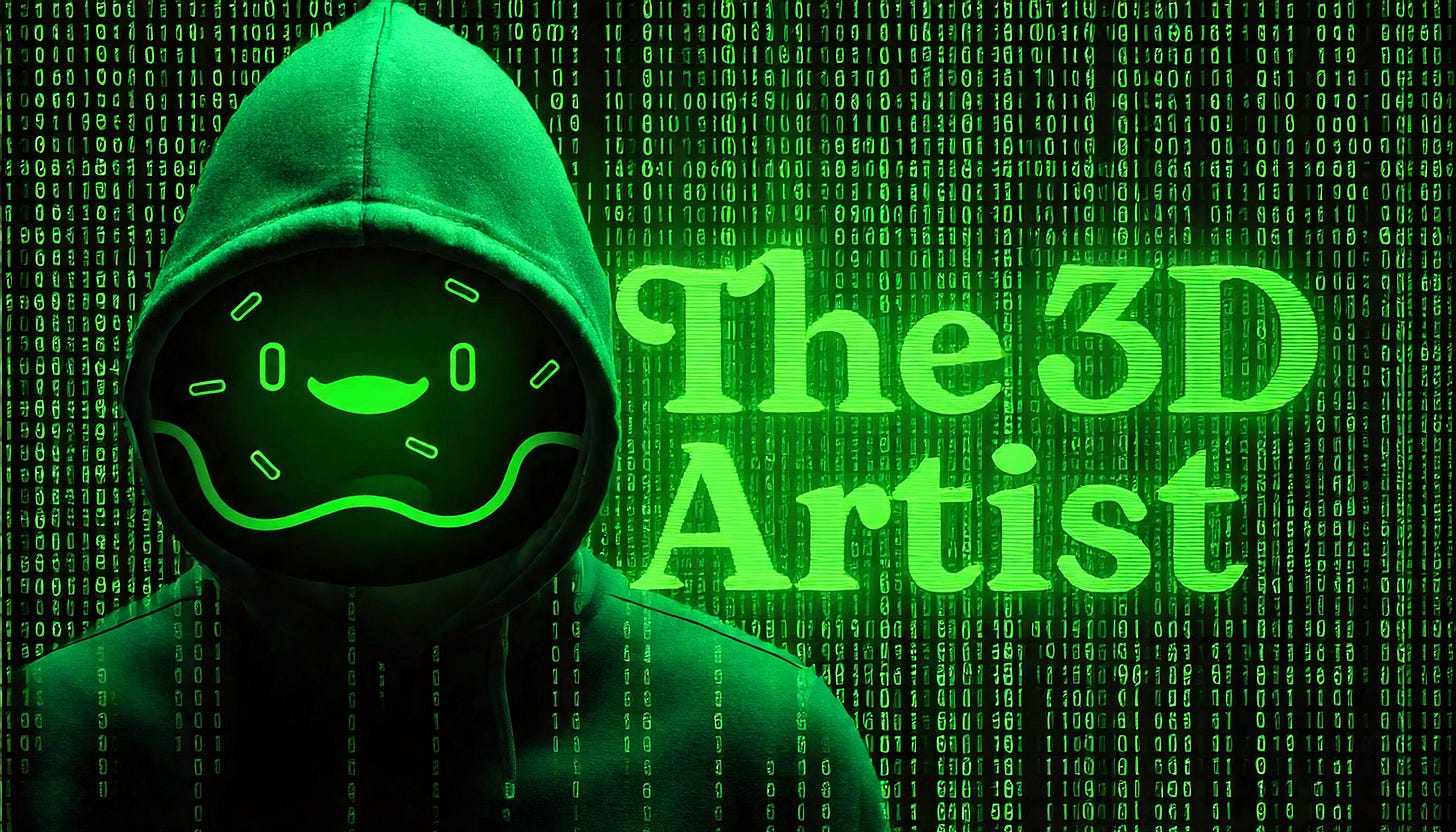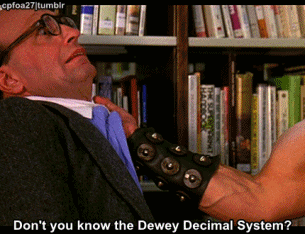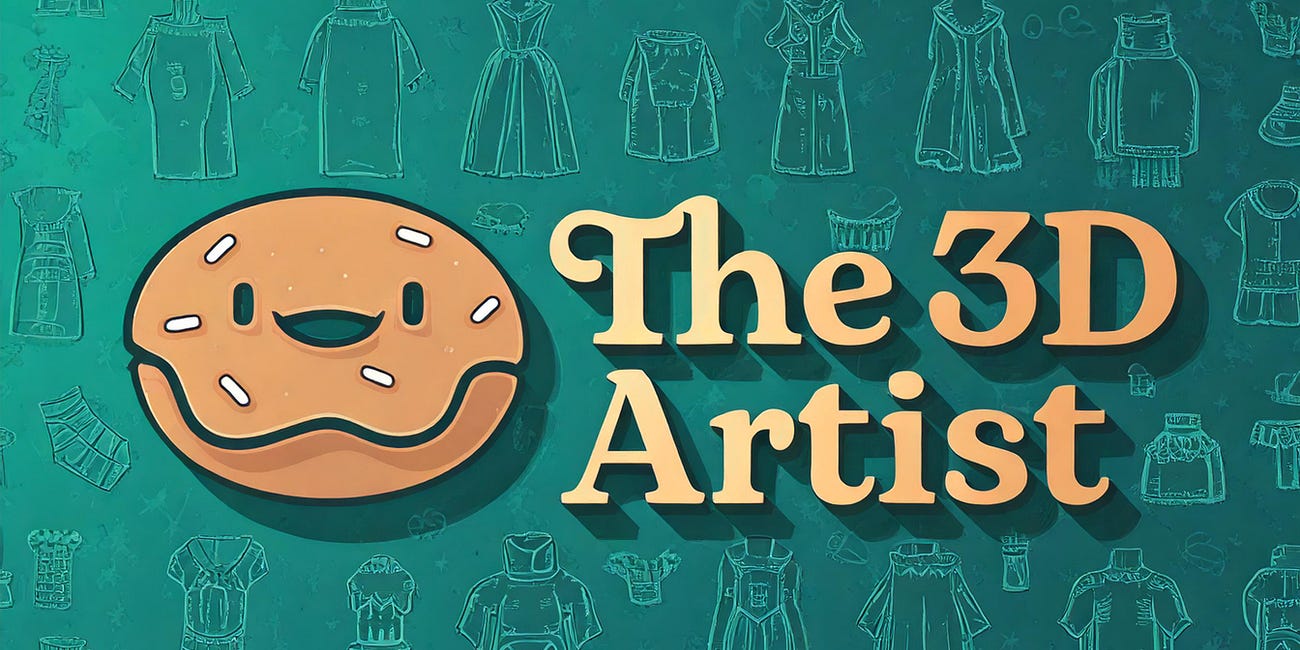WTF is an API?
Demystifying Software APIs and SDKs
All right, everybody! Welcome to another year of The 3D Artist Newsletter. It’s hard to believe we’re two years into this thing. We’ve gained a little more experience, a little more knowledge, and dare I say, we’re feeling just a bit savvier. But there’s only one way to kick off another year—by going back to being the dumbest person in the room
This time, I’m tackling a topic that I’ve heard tossed around in conversations but never felt confident about until recently: APIs. I’ve got that sneaking suspicion that I’m not the only one who finds them a little mysterious. So, let’s break it down in a way that makes sense for all of us 3D artists.
What Is an API?
An API, or Application Programming Interface, is a set of rules and tools that allow different software programs to communicate with each other. It acts as a bridge, enabling one piece of software to interact with another without needing to know how the other is built internally. APIs define the methods and data formats developers can use to request specific actions or retrieve information from a program.
Think of an API as a librarian in a massive archive. Imagine this archive is filled with every piece of information and every tool you might need to finish a project. But without help, you’re just wandering aimlessly through endless shelves. Enter the librarian. They know exactly where everything is and can retrieve what you need efficiently. They have the organization and that sweet, sweet Dewey Decimal System.
In this analogy:
The archive represents the software’s code base (all its tools, features, and data).
The librarian is the API, acting as a middleperson.
And you are the person entering the library, making requests to get what you need.
Instead of rummaging through the stacks yourself (aka the code base), you ask the librarian (API), “Can you get me this specific thing?” And voilà, they deliver.
A simpler analogy? Think of an API as a waiter at a restaurant. You place an order (your request), and the waiter communicates with the kitchen (the code base) to bring you your dish (the result). Easy, right?
How Are APIs Used in 3D Workflows?
Pretty much every major 3D software—Maya, Substance, Houdini, Blender—has an API. Studios and artists use these APIs to:
Automate Repetitive Tasks: Say goodbye to tedious, manual workflows. For example, an API can help set up rigs, apply textures, or render batches of images automatically.
Optimize Workflows: Custom scripts can tailor software to your specific needs, making everything smoother and faster.
Build Custom Tools: Sometimes the default tools in software don’t cut it. APIs let you create specialized tools for unique tasks.
Connect Software: Working in 3D often means jumping between tools—Maya to Substance to Unreal, for example. APIs help bridge these tools, allowing them to share data seamlessly.
The Key to APIs: You Need Code
Here’s the catch: APIs don’t have a friendly graphical interface. You can’t just click around and get what you need. You’ll need to write code to interact with an API, usually in programming languages like Python or C++. Some APIs also provide higher-level libraries or SDKs, which can simplify interactions for non-expert coders by offering pre-built tools and abstractions. For example, Maya uses Python and MEL scripting, while other tools might rely on similar languages.
If you’re not a coder yourself, you’ll need to collaborate with a software engineer to unlock the potential of APIs in your workflow.
What Is an SDK, and How Is It Different from an API?
While an API is a way to interact with software, an SDK, or Software Development Kit, is a more comprehensive toolkit. An SDK typically includes APIs along with additional tools like libraries, documentation, sample code, and sometimes even development environments. If an API is the librarian, an SDK is like the librarian handing you not only the book but also a guide to using it, a map of the library, and a reading light.
For example:
API: Provides the specific functions to retrieve data or trigger actions within software.
SDK: Offers the resources to build an entire application, which might include using multiple APIs.
SDKs make it easier for developers to create software because they provide a starting point and often abstract away some of the complexity involved in using APIs.
Why Not Just Skip the API and Write Custom Code?*
A fair question: If you need a software engineer to use an API, why not just hire one to write everything from scratch?
Here’s why that’s a bad idea:
APIs Are Built by Experts: The developers of Maya or Houdini know their software inside and out. Their APIs are finely tuned to work with the internal code.
Time and Cost: Writing custom solutions to replicate an API’s functionality would take an enormous amount of time and money.
Access: APIs offer deep integration and access to proprietary parts of the software that would be impossible (or illegal) to reverse-engineer.
Using an API is like going to the librarian who organized the archive instead of wandering aimlessly through the stacks. However, APIs do have some limitations. They often require a steep learning curve for new users, especially those unfamiliar with coding, and may involve licensing costs that vary depending on the software. These factors should be considered when integrating APIs into your workflow.
Why APIs Matter Now More Than Ever
Here’s the big picture: The speed and scale of content creation in 3D are accelerating. Clients demand more images, more iterations, and more variations—faster than ever. Real-time rendering engines and other technologies are enabling this, but manual workflows can’t keep up.
The studios that thrive will be the ones that embrace automation and build efficient systems using APIs. The ability to scale production without scaling costs or time spent will separate the leaders from the rest.
Earlier in my career, I was obsessed with crafting the perfect image—and that’s still important. But the real power today lies in designing systems that enable your team to create incredible work at scale. APIs are a critical piece of that puzzle.
The 3D Artist Community Updates
We are thrilled to have Angela Holm as our AMA guest in the 3DAC! Angela is a versatile 3D Swimwear Designer with expertise in creating assets for design and marketing. Skilled in 3D apparel design, photography, and graphic branding, she excels in problem-solving, streamlining processes, and managing projects under pressure. She is also one of the strongest leaders of the 3D Artist Community and we are thrilled to have a chance to get to know her journey a little more deeply.
3D Merch is here and we have a new hoodie!
3D News of the Week
High-Fidelity 3D Mesh Generation at Scale with Meshtron - Nvidia
Digital Fashion Artist Vesna Stawa On Dreamy Florals, Fantasy And FRMD - Forbes
Chaos launches beta for V-Ray integration with Blender - CGPress
Learn How to Tear through Shapes in Maya - 80.lv
Mischievous Grinch Recreated in 3D with Uniform App - 80.lv
New 3D Job Openings
Sometimes the best job posts are short and sweet. Let’s kick things off with this one…
3D Job Spreadsheet
Link to Google Doc With A TON of Jobs in Animation (not operated by me)
Hello! Michael Tanzillo here. I am the Head of Technical Artists with the Substance 3D Growth team at Adobe. Previously, I was a Senior Artist on animated films at Blue Sky Studios/Disney with credits including three Ice Age movies, two Rios, Peanuts, Ferdinand, Spies in Disguise, and Epic.
In addition to his work as an artist, I am the Co-Author of the book Lighting for Animation: The Visual Art of Storytelling and the Co-Founder of The Academy of Animated Art, an online school that has helped hundreds of artists around the world begin careers in Animation, Visual Effects, and Digital Imaging. I also created The 3D Artist Community on Skool and this newsletter.
www.michaeltanzillo.com
Free 3D Tutorials on the Michael Tanzillo YouTube Channel
Thanks for reading The 3D Artist! Subscribe for free to receive new posts and support my work. All views and opinions are my own!











Sooo funny!
I’m just finally getting caught up on your articles! He wrote such nice words about me 🥰 thank you!!
UHF 😂